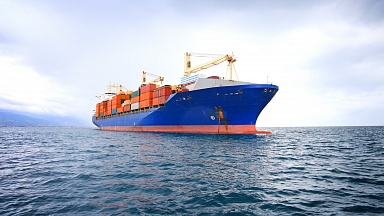Boxship fleet growth is estimated at 9% this year, outpacing demand growth of approximately 4%.
In the second half of 2024, assuming that the Red Sea crisis has been resolved, the challenges seen after the Covid-19-fuelled boom could rear their head again.
Clarksons said, «The situation is fluid, but at present a resolution seems unlikely in the short-term, and disruption would likely some time to unwind should the situation ease; our current ‘base case’ forecast basis 1H 2024 of disruption would lead to around 6% uplift in full year 2024 TEU-mile trade). Clearly this ‘boost’ will be focused in 1H in this scenario and demand trends would be expected to ‘normalise’ once disruption ends, though a longer period of rerouting would have a greater impact.»
The world’s largest shipbroker noted that to manage the tonnage shortage due to the longer voyage times round the Cape of Good Hope, operators have been running vessels at higher speeds. Operating speeds averaged 14 knots in late March, up 1% from the 2023 average.
In February, 18 container ships of 145,000 TEUs were delivered, bringing year-to-date deliveries to 67 units of 449,000 TEU, a record for deliveries in capacity terms. Deliveries in 2024 are currently projected to reach 2.7 million TEUs, an all-time record, while a further 2 million TEUs is scheduled for delivery in 2025 and 2026 — both double the 2019-2022 average.
Should the Red Sea crisis fade away, 2025 will be a challenging year, as the fleet is expected to grow by more than 5%, despite more potential for vessel demolitions.
However, stricter environmental regulations mean that operators will have to resume slow-steaming once Suez Canal crossings resume. The supply-demand gap could also be narrowed as demand growth is forecast at 3% in 2025.





